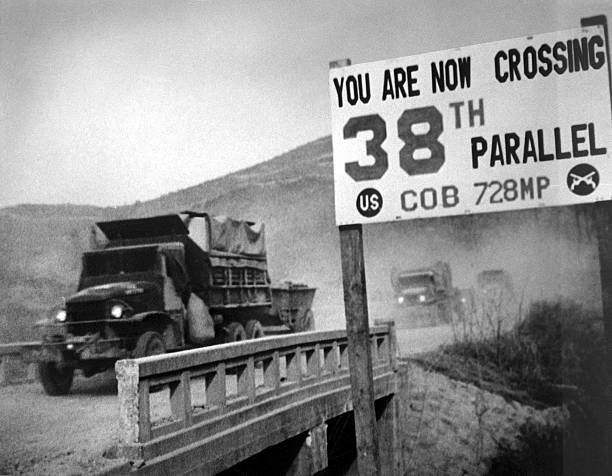The Korean War
Avery Guy Bishop
|
The Korean War began on June 25, 1950 when 75,000 soldiers from the North Korean Peoples Army (Soviet baked) crossed the 38th parallel - the boundary between the North and the pro-western Republic of Korea to the south. It was a war against the forces of international communism. By July 1950 American troops had entered the war on South Korea's behalf.
Initially the war was a defensive one to get the communists out of South Korea and it didn't go well. The North Koreans were well disciplined, well trained and well equipment, while the South Koreans were confused, fightened and inclined to leave the battlefield. Because it was also a very hot and dry summer, desperately thirsty American soldiers were often forced to drink water from rice paddies that had been fertilized with human waste. As a result, dangerous intestinal diseases and other illnesses were a constant threat. By the end of the summer, the Americans had a new set of aims - the war became an offensive one to "liberate" the North from the communists and initially this was successful. Under the leadership of General Douglas McArthur the Inch'on Landing pushed the North Koreans out of Seoul and back to their side of the 38th parallel. Then the Chinese got involved worrying about protecting themselves from what they called "armed aggression against Chinese territory" and sent troops o North Korea as a warning to the US. President Truman was trying to avoid an all out war, but McArthur was pushing for it. After several months of conflict between the men, Truman fired the General for insubordination in April 1951. Truman and his advisers began the peace talks while fighting continued along the 38th parallel. After two years of negotiations, the North Koreas and Americans signed an armistice on July 27, 1953. The Korean War was relatively short, but exceptionally bloody. Nearly 5 million people died - more tha half were Korean civilians. 40, 000 Americans died iin action in Korea and another 100,00 were wounded. Johnson County lost 16 men to this war. wikipedia |
